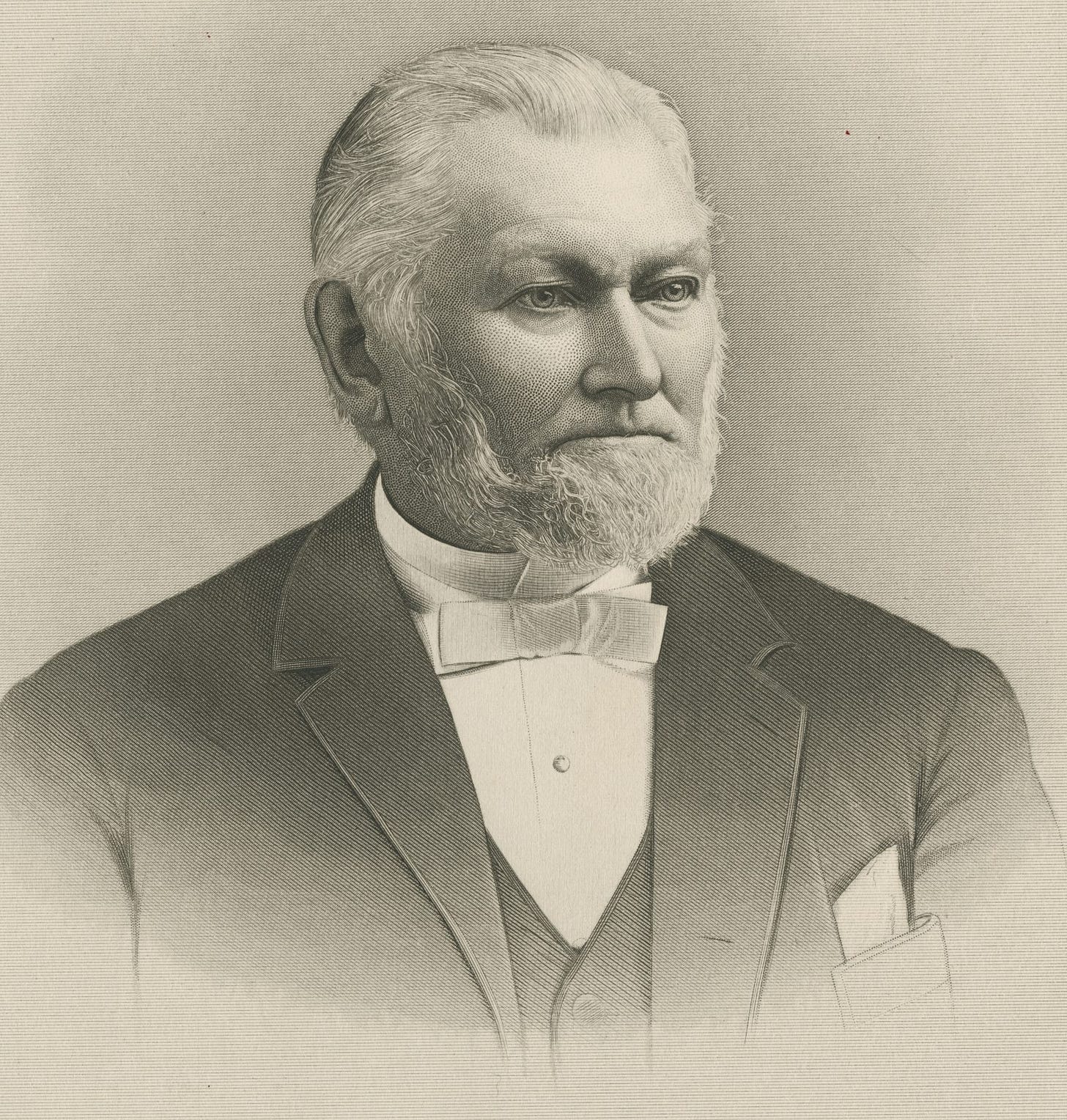A Voice from the Nineteenth Century
Wilford Woodruff's experience with the phonograph
On the 4th of February 1897, entrepreneur and inventor Selden Clawson met with President George Q. Cannon of The Church of Jesus Christ of Latter-day Saints’ First Presidency to discuss some real estate business.1 Five days later, Selden, who was a grandson of Brigham Young and a committed Latter-day Saint, wrote to President Cannon:
I have secured a phonograph and some blank cylinders and can make some records any time you areready [sic]. I will come up to the Office or go down to youl [sic] residence, either in the evening or during the daytime. and meantime I will await youl [sic] pleasure.2
It is unclear whether President Cannon responded to Selden. However, a month later on 1 March 1897, President Cannon gave a public address in connection with the Prophet’s ninetieth birthday in which he suggested that ‘the sound of President Woodruff’s voice should be engraved upon the cylinders of a phonograph, that in after years the young and rising generation might enjoy its sweet and loving vibrations.’3
A phonograph was an audio recording device that recorded audio onto wax-coated cardboard cylinders. The cartridges could then be played back through the device. The technology was new, expensive, and basic when compared with modern capabilities, but in 1897 it was still a cutting-edge development.
Just under two weeks later, on 12 March, President Woodruff, President Cannon, and Joseph Daynes, a son-in-law of President Woodruff, met to record their testimonies using a phonograph.4 President Woodruff had worked with Arthur Winter, his secretary, to draft the testimony he would read. Presidents George Q. Cannon and Joseph F. Smith added their testimonies to the prophets’.
The recording, however, did not come through clearly. ‘My own testimony I would not have distinguished,’ wrote President Cannon. ‘I was hoarse and my voice sounded gruff and unnatural.’

Desiring to have a better quality recording President Woodruff recorded his testimony again on the 19th of March 1897. Arthur Winter recorded the occasion in his journal. ‘…in years to come, long after he shall have passed away, one may hear reproduced by the phonograph the words that he spoke and the very tone of his voice.’5
Below you can listen to the audio recording of Wilford Woodruff’s testimony from the 19th of March 1897:6
Or read along in the transcript:
I bear my testimony that Joseph Smith said, before a large assemblage in Illinois, that if he were the emperor of the world and had control over the whole human family he would sustain every man, woman and child in the enjoyment of their religion. Those are my sentiments today.
I bear my testimony that Joseph Smith was a true prophet of God, ordained of God to lay the foundation of his church and kingdom in the last dispensation of the fulness of times.
I bear my testimony that in the early spring of 1844, in Nauvoo, the Prophet Joseph Smith called the Twelve Apostles together and he delivered unto them the ordinances of the Church and kingdom of God; and all the keys and powers that God had bestowed upon him, he sealed upon our heads, and he told us that we must round up our shoulders and bear off this kingdom, or we would be damned. I am the only man now living in the flesh who heard that testimony from his mouth, and I know that it was true by the power of God manifest to him. At that meeting he stood on his feet for about three hours and taught us the things of the kingdom. His face was as clear as amber, and he was covered with a power that I had never seen in any man in the flesh before.
I bear testimony that Joseph Smith was the author of the endowments as received by the Latter-day Saints. I received my own endowments under his hands and direction, and I know that they are true principles. I not only received my own endowments under his hands, but I bear my testimony that Brigham Young, Heber C. Kimball, Willard Richards, George A. Smith, John Taylor and other brethren received their endowments under the hands and direction of the Prophet Joseph; and also my wife Pheobe, Bathsheba Smith, Leonora Taylor, Mary Smith and others whose names I cannot recall now.
The Prophet Joseph laid down his life for the word of God and testimony of Jesus Christ, and he will be crowned as a martyr in the presence of God and the Lamb.
In all his testimonies to us the power of God was visibly manifest with the Prophet Joseph.
This is my testimony, spoken by myself into a talking machine on this the 19th day of March, 1897, in the 91st year of my age.
Wilford Woodruff7
George Q. Cannon, journal, 4 February 1897, available at: https://www.churchhistorianspress.org/george-q-cannon/1890s/1897/02-1897?lang=eng, [date accessed: 12 January 2023].
Letter from Selden I. Clawson to George Q. Cannon, 9 February 1897, CR 1 171, bx. 1, fd. 25, CHL.
George Q. Cannon, journal, 1 March 1897, available at: https://www.churchhistorianspress.org/george-q-cannon/1890s/1897/03-1897?lang=eng, [date accessed: 13 January 2023].
Richard Neitzel Holzapfel and Stephen H. Smoot, ‘Wilford Woodruff’s 1897 Testimony,’ in Alexander L. Baugh and Susan Easton Black, eds., Banner of the Gospel: Wilford Woodruff (Provo, UT: Religious Studies Center, Brigham Young University; Salt Lake City: Deseret Book, 2010), pp. 327–64.
Arthur Winter, journal, vol. 4, 19 March 1897, pp. 164-165.
Wilford Woodruff testimony, 19 March 1897, AV 1, bx. 1, fd. 1, CHL.
Wilford Woodruff statement, 19 March 1897, Salt Lake City, Utah, USA, MS 974, bx. 1, fd. 1, CHL.


James I am so glad you posted this! I love hearing this recording and am so grateful we have it! What a priceless treasure!